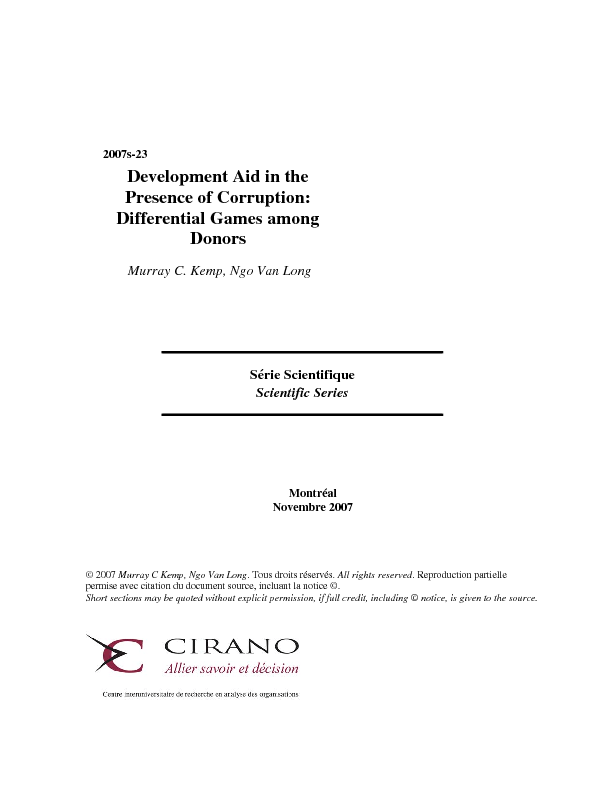Development Aid in the Presence of Corruption: Differential Games among Donors
In this paper, we complement the work of Kemp and Shimomura (2002) by considering the case of many donors playing a dynamic non-cooperative game of foreign aid. We consider two models. Model 1 deals with the case where donor countries continually feel the warm glow of from the act of giving. Model 2 postulates that donors will stop giving aid when a target level of development is reached. One of the main results of Model 1 is that there are multiple equilibria that can be Pareto ranked. Another interesting result is that an increase in the level of corruption in the recipient country will reduce the aid level of the low aid equilibrium, but increase that of the high aid equilibrium. In Model 2, the equilibrium strategies are non-linear functions of the level of development. The flow of aid falls at a faster and faster rate as the target is approached. An increase in corruption will increase the flow of aid in this model.
[ - ]




